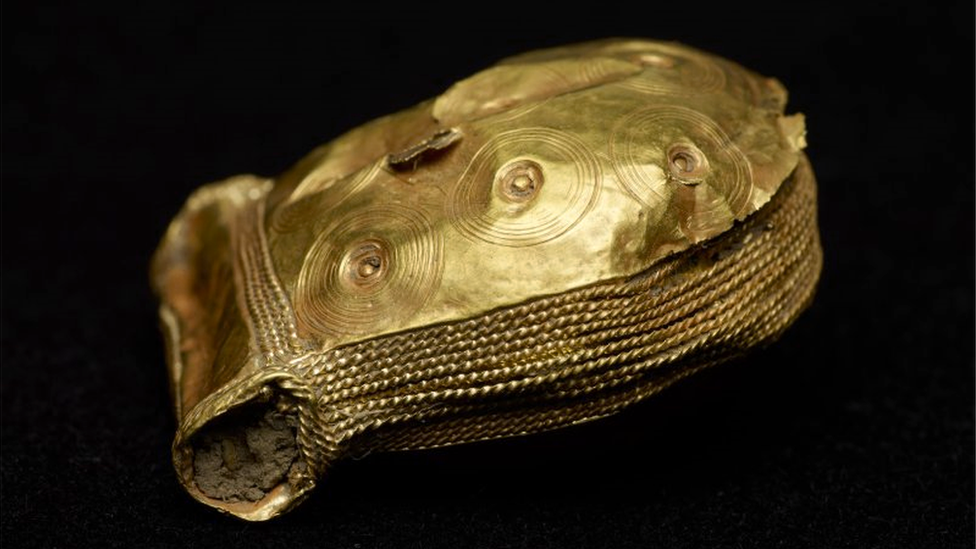Ancient treasure displayed at Ulster Museum
- Published
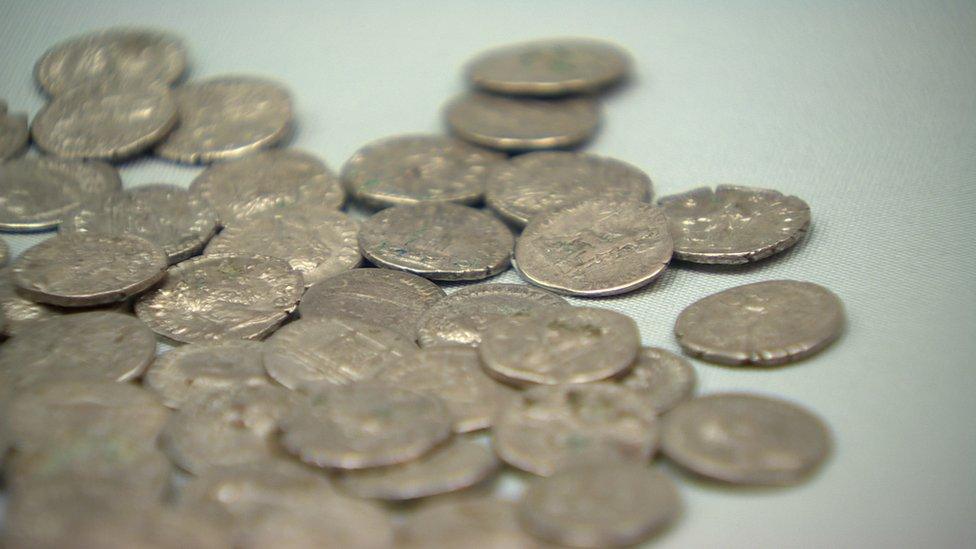
The collection includes items such as Roman coins that could be up to 5,000 years old
Ancient treasures from across the UK and Ireland have gone on display at the Ulster Museum in Belfast.
The exhibition includes some finds such as Bronze Age weapons, Roman coins and Iron Age jewellery, which are up to 5,000 years old.
Some were unearthed by experts but many were found by people doing everyday things.
There are gold Roman rings found in County Down and fragments of a bronze cup found in County Armagh.
Dr Greer Ramsey, the curator of archaeology at National Museums Northern Ireland (NMNI), said the hoards tell us a lot about how our ancestors lived.
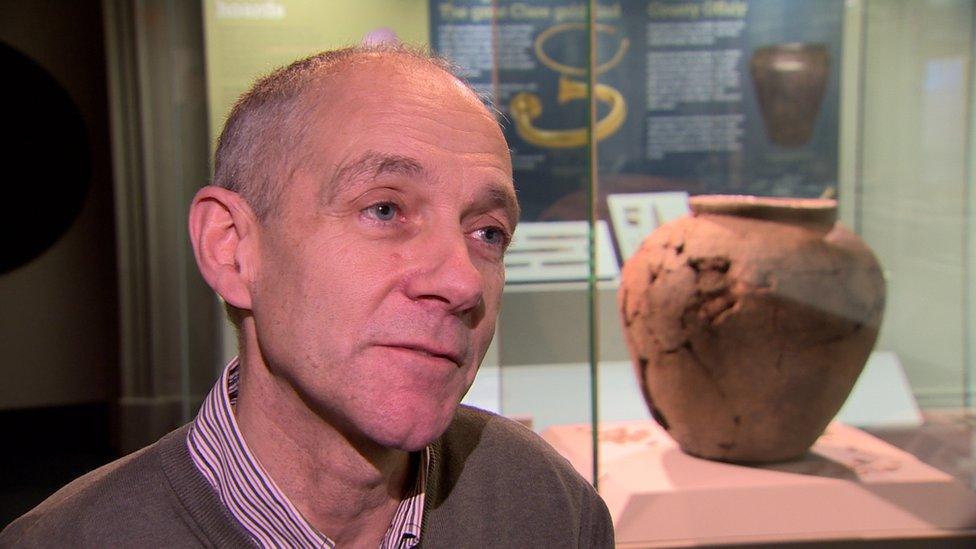
Dr Greer Ramsey says treasured items may have been buried as offerings to gods
"There's a little Roman purse that was worn on the arm by a soldier - perhaps the pre-runner to the man-bag!" he said.
"What did people do before there were savings banks? Well, people often hid objects in the ground.
'Offerings to the gods'
"There's a little Roman money box hoard, with over 600 silver coins and a silver spoon, so that was someone's savings.
"Objects were buried in the ground for a variety of reasons - particularly in the prehistoric period we get some very large hoards.
"In Ireland they often occur in boggy land so perhaps these were offerings to the gods.
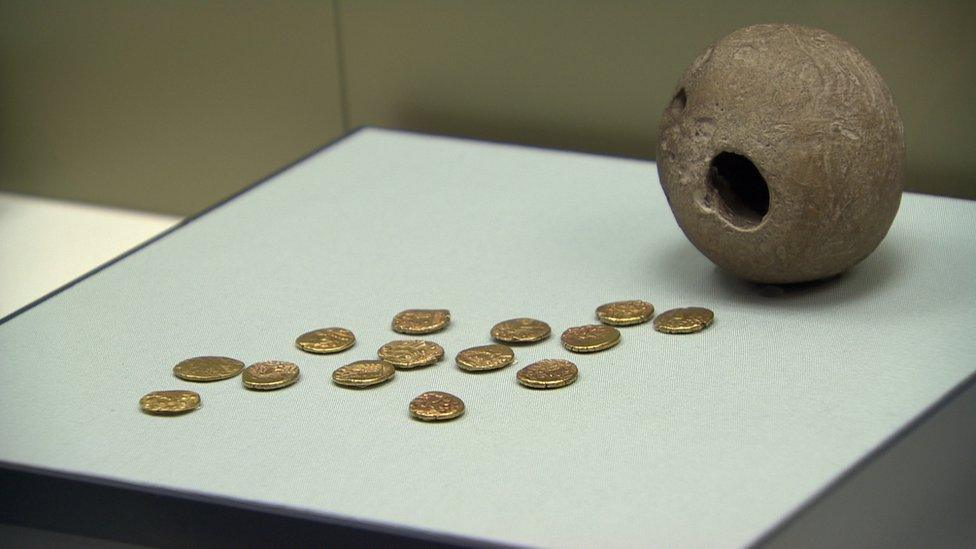
The items on display at the Ulster Museum tell us much about our ancestors, says Dr Greer Ramsay
"We also must imagine that the objects they selected to be buried were important to them for a variety of reasons."
The exhibition includes a substantial number of items on loan from the collections of Salisbury Museum and the British Museum.
Dr Eleanor Ghey, the British Museum's curator of Iron Age and Roman coins, said the museum receives about 100 finds a year.
"Things have been found by people walking their dog or digging in their garden," she said.
"There are some amazing gold torcs from Ipswich in the exhibition, which were found during the building of houses.
"Five of them were found at one time and then another one was found at a later date when the soil had been moved to someone else's garden.

Dr Eleanor Ghey says people have found treasure items by walking their dog or digging in their garden
"So we encourage people to report things they find, even if they're not potential treasure, as it's telling us a lot about how people lived in the past."
A torc is a stiff necklace - the ones Dr Ghey was referring to in the exhibition have been dated back to between 150BC and 50BC.
Found hidden treasure?
What is the legal position if someone finds what turns out to be treasure?
In Northern Ireland, the Treasure Act 1996 applies.
Members of the public are obliged to report all archaeological finds to NMNI for the purpose of recording whether or not they classify as treasure.
Treasure usually means objects over 300 years old and made of gold or silver.
If an object is considered to be treasure, the coroner holds an inquest after a report on the item.

Members of the public are obliged to report all archaeological finds to NMNI
It will include statements from the finder and the owner of the land where the treasure was found.
The process usually ends with the treasure being valued and offered to NMNI to acquire.
If NMNI buys it the finder and landowner get an equal share of what it is worth.
So it might be worth paying attention if you spot something shiny while digging the garden or walking the dog.
Hoards: The Hidden History of Britain and Ireland runs at the Ulster Museum until 31 March.
- Published6 October 2018
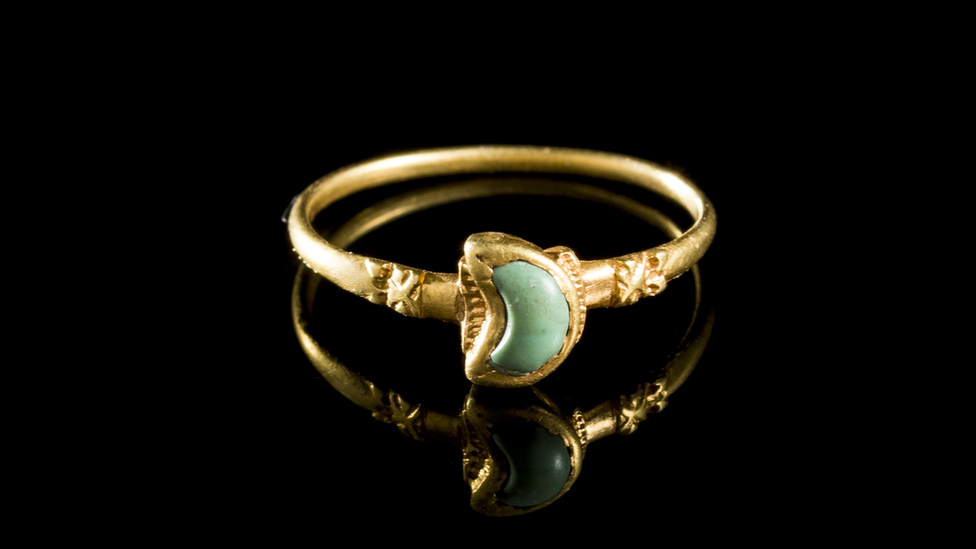
- Published26 July 2018
